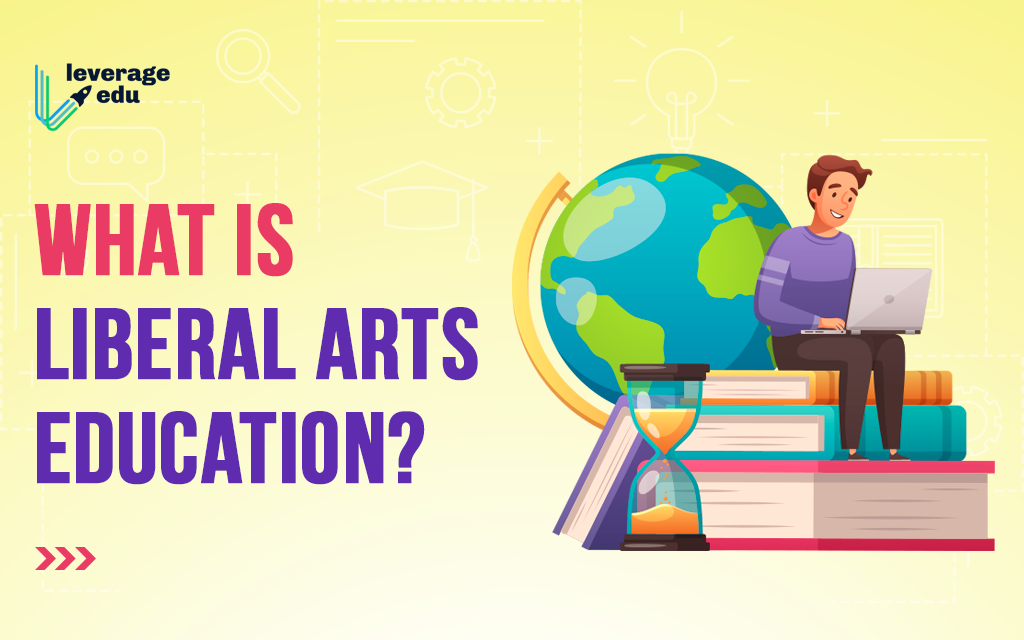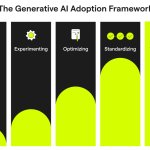Liberal Arts Education represents a transformative approach in higher education, emphasizing the development of critical thinking skills and intellectual versatility over narrow vocational training. This educational model fosters a rich environment for exploring diverse subjects such as history, philosophy, and the arts, which are crucial for cultivating well-rounded individuals. As the importance of liberal arts becomes increasingly recognized, many are questioning the value of such an education amidst a job market that seems to prioritize specific skills. However, this broad-based learning approach equips students not only for their first job but also for a lifetime of adapting to an ever-evolving economy. By embracing the value of liberal arts, colleges can nurture a generation of thinkers prepared to tackle complex global challenges with creativity and insight.
A liberal arts education, often referred to as a humanities-based curriculum, embodies the essence of cultivating critical analysis and problem-solving abilities in students. This approach to academic development emphasizes the importance of a diverse knowledge base, encouraging students to engage with a variety of disciplines that foster intellectual curiosity and social awareness. With the rising necessity for adaptive skills in today’s workforce, the relevance of such a comprehensive educational experience stands out. Not only does this type of education prepare individuals for specific career paths, but it also cultivates general competencies that enhance personal growth and societal contributions. Promoting the significance of this kind of college education can help dismantle misconceptions about its value compared to more specialized fields.
The Value of Liberal Arts Education in Today’s Economy
In the current job market, the value of a liberal arts education often comes into question as students and parents weigh the potential return on investment of a college degree. While many view liberal arts disciplines like philosophy, literature, and history as lacking direct vocational relevance, these fields actually cultivate critical thinking skills that are essential in a rapidly changing economic landscape. According to experts, a liberal arts education prepares students not just for their first job but for a lifetime of adaptability in various career transitions. By learning to navigate complex social dynamics and think independently about multifaceted issues, graduates are equipped to handle unexpected challenges in the workforce.
Moreover, the skills developed through a liberal arts education — such as analytical reasoning, effective communication, and cultural awareness — are increasingly sought after by employers across sectors. Although initial salaries for liberal arts graduates may not seem competitive compared to their peers in STEM fields, research indicates that over time, these graduates often close the earnings gap through their adaptability and continuous learning capabilities. In a society that values diverse perspectives and innovation, the importance of liberal arts education cannot be overstated.
The Importance of Critical Thinking Skills in a Liberal Arts Curriculum
One of the defining features of a liberal arts education is its emphasis on fostering critical thinking skills. Students learn to analyze arguments, evaluate evidence, and engage with differing viewpoints, which cultivates a form of intellectual agility crucial for navigating complex real-world problems. This aspect of a liberal arts education positions graduates to think critically about information, which is increasingly important in an age where misinformation is prevalent. Learning to discern credible sources and understand various motivations behind claims is a skill set that transcends disciplines and is invaluable regardless of career choice.
Furthermore, developing critical thinking skills through liberal arts studies prepares students for leadership roles in their communities and workplaces. A strong foundation in liberal arts enables future leaders to approach issues with empathy and a broader perspective, fostering collaboration among diverse groups. This skill is particularly vital in today’s interconnected world where teams often comprise individuals from various disciplines and backgrounds. The capacity to engage thoughtfully with others and constructively debate ideas is a hallmark of a well-rounded liberal arts education.
A Broad Education: Preparing for the Future Workforce
As the workforce continues to evolve, the perception of what constitutes a valuable education shifts alongside it. Employers increasingly seek individuals who possess not just specific technical skills but also the capability to learn new skills as industries transform. A liberal arts education provides a broad spectrum of knowledge and transferable skills that are essential in this unpredictable climate. By learning in a multidisciplinary context, students become versatile thinkers capable of tackling a wide array of challenges, thus making them attractive candidates in various job sectors.
Moreover, the importance of a broad education goes beyond mere job preparation; it nurtures a way of thinking that is crucial for democratic engagement and societal advancement. Students emerge from liberal arts programs with refined problem-solving abilities, ready to face societal changes with a creative and informed approach. This holistic preparation ensures they can contribute meaningfully to the workforce while also maintaining a sense of civic responsibility.
Challenges Facing Liberal Arts Education Today
Despite its numerous benefits, liberal arts education faces significant challenges in the current higher education landscape. Rising tuition costs and the increasing emphasis on vocational training have led many to question the practicality of pursuing a liberal arts degree. Consequently, enrollment in traditional liberal arts programs has seen a decline, leaving institutions grappling with how to effectively communicate the value of such an education to prospective students. Many families weigh the cost against perceived job security, leading to the mischaracterization of liberal arts as a luxury rather than a necessity in higher education.
Additionally, the cultural narrative surrounding education often prioritizes immediate job readiness over a comprehensive learning experience. This focus can diminish the perceived importance of disciplines traditionally seen as less directly related to career outcomes. As result, universities must innovate their approaches to liberal arts education, making curricula more engaging and relevant to today’s students while highlighting how the skills gained align with real-world applications and employer expectations.
Revamping the Appeal of Liberal Arts Education
To revitalize interest in liberal arts, institutions need to reframe their messaging and integrate real-world applications into their curricula. By maintaining core liberal arts principles while demonstrating their relevance to the modern economy, colleges can attract a broader range of students. This includes offering interdisciplinary programs that combine liberal arts with vocational training, highlighting how such an education equips graduates with both the analytical skills needed in various industries and the adaptability essential for the future workforce.
Moreover, increasing access to liberal arts education—especially for first-generation college students or those from low-income backgrounds—is crucial. Colleges must ensure that financial barriers do not exclude talented individuals from pursuing a well-rounded education. By creating supportive environments that encourage exploration and interdisciplinary learning, institutions can help change the perception of liberal arts from that of a luxury education to one that is fundamentally important for a thoughtful, engaged, and skilled society.
The Role of Liberal Arts Education in Fostering Civic Engagement
A liberal arts education does more than prepare students for professional success; it plays a pivotal role in cultivating informed and engaged citizens. In a democratic society, individuals who have studied liberal arts are often better equipped to critically evaluate the plethora of information presented to them and actively participate in civic life. By engaging with diverse perspectives during their studies, students learn the importance of discourse, understanding, and negotiating differences, which are paramount in a functioning democracy.
Furthermore, graduates are encouraged to apply their knowledge to societal issues, fostering a sense of responsibility and community involvement. Whether through public service, advocacy, or community organizing, the skills acquired during a liberal arts education empower individuals to contribute positively to their communities. As such, the impact of liberal arts education extends beyond the academic realm, shaping citizens capable of leading and shaping a more equitable society.
Integrating Technology and Innovation in Liberal Arts Education
In an era marked by rapid technological advancements, liberal arts education also faces the imperative of integration with modern tools and methodologies. Many institutions are beginning to explore how technology can enhance the educational experience within liberal arts disciplines. This includes utilizing digital platforms for collaborative projects, employing multimedia resources for learning, and integrating artificial intelligence to personalize education pathways. Such innovations can make liberal arts education more engaging while also preparing students to navigate and utilize technology in their future careers.
Moreover, developing new assessment methods that reflect skills in collaboration, creativity, and critical thinking will be essential as the landscape of both education and employment continues to evolve. By challenging students to apply their liberal arts education in technologically enhanced settings, colleges can enrich the learning experience and ensure that graduates are as versatile and prepared as possible for new workforce demands.
Liberal Arts Education: Bridging Disciplines for Enhanced Learning
One of the most compelling aspects of a liberal arts education is its interdisciplinary nature. By encouraging students to explore subjects across various fields, such as humanities, social sciences, and natural sciences, liberal arts education fosters a comprehensive understanding of complex issues. This bicameral approach helps students develop nuanced perspectives, enhancing their ability to think critically and creatively about real-world problems.
Additionally, the blending of disciplines can lead to innovative solutions and breakthroughs in thought. Students who engage in interdisciplinary studies often bring fresh insights to traditional fields, promoting innovation and creativity in their future workplaces. Therefore, embracing this cross-disciplinary approach is crucial for higher education institutions, as it not only enriches the student experience but also prepares graduates for increasingly collaborative and multifaceted roles in the modern economy.
Future Directions for Liberal Arts Education
Looking ahead, the future of liberal arts education will hinge on its ability to adapt and respond to evolving societal needs and economic landscapes. Institutions must remain committed to demonstrating the relevance of liberal arts in developing versatile, critical thinkers who can navigate complexity and change. By continuing to innovate curricula and enhance accessibility, colleges can maintain the appeal of liberal arts education for diverse student populations.
Moreover, collaboration with industries, alumni, and community organizations will be essential in reshaping liberal arts education to meet the demands of the future workforce. By engaging with stakeholders outside campus walls, institutions can align their programs with actual workforce needs and ensure that graduates are prepared for the realities they will face after college. This proactive approach will ultimately reaffirm the enduring value of liberal arts education in nurturing informed, adaptable, and socially responsible citizens.
Frequently Asked Questions
What is the value of liberal arts education in today’s economy?
The value of a liberal arts education in today’s economy lies in its emphasis on critical thinking skills, adaptability, and the ability to approach unforeseen problems. Unlike vocational training which focuses on specific competencies, a liberal arts education fosters a well-rounded skill set that prepares students for a rapidly evolving job market, making them versatile candidates for various roles.
Why is critical thinking important in a liberal arts education?
Critical thinking is essential in a liberal arts education as it equips students with the ability to analyze information, evaluate arguments, and synthesize diverse perspectives. This skill set is crucial in higher education and in the workforce, where the ability to navigate complex issues and engage with differing viewpoints can lead to better decision-making and problem-solving outcomes.
How does liberal arts education contribute to personal growth and development?
Liberal arts education contributes to personal growth by encouraging exploration of diverse subjects and ideas. This broad exposure helps students develop empathy, cultural awareness, and a sense of self. The interdisciplinary nature of liberal arts fosters lifelong learning and intellectual curiosity, essential for adapting to change in one’s personal and professional life.
What are the career benefits of studying liberal arts?
Studying liberal arts provides numerous career benefits, including enhanced critical thinking skills and strong communication abilities that are valued across industries. Graduates often find that their diverse knowledge equips them to thrive in various fields, as employers increasingly seek candidates who can think critically and adapt to changing environments, not just those with specific technical skills.
Is a liberal arts degree a good return on investment compared to vocational degrees?
While initial earnings may be lower compared to vocational degrees, a liberal arts degree often leads to a good return on investment over time. Graduates develop transferable skills that are in demand, allowing them to adapt and grow within their careers, ultimately leading to competitive salaries and opportunities for advancement in an evolving job market.
Why might liberal arts education be perceived as a luxury?
Liberal arts education is sometimes viewed as a luxury due to its costs and the perception that it does not lead directly to specified job outcomes. This view is complicated by economic pressures that prioritize immediate job readiness over broader educational benefits. Advocates argue for a reevaluation of its societal value, emphasizing its role in cultivating informed citizens and critical thinkers.
What can be done to enhance the appeal of liberal arts education?
Enhancing the appeal of liberal arts education involves increasing accessibility, incorporating real-world applications into curricula, and clearly communicating its value in developing essential skills for the modern workforce. By highlighting the importance of critical thinking, creativity, and adaptability, institutions can better engage students and parents considering higher education pathways.
How does a liberal arts education prepare students for democratic citizenship?
A liberal arts education prepares students for democratic citizenship by fostering critical engagement with diverse perspectives and ideas. It encourages students to think independently and participate in civic discourse, which is vital for a healthy democracy. The skills gained through liberal arts studies, such as communication and ethical reasoning, support informed participation in society.
What challenges does liberal arts education face in the current educational landscape?
Liberal arts education faces challenges such as declining enrollment, increased scrutiny on tuition costs, and competition from more vocationally focused programs. These issues highlight the need for advocates to effectively communicate the long-term benefits of liberal arts, emphasizing its role in developing critical skills pertinent to today’s job market.
How does technological advancement affect liberal arts education?
Technological advancements impact liberal arts education by transforming teaching methods and assessment strategies. As technology evolves, educators are exploring innovative ways to use digital tools to enhance critical thinking and collaborative skills among students, ensuring that liberal arts curricula remain relevant in preparing graduates for future challenges.
| Key Point | Description |
|---|---|
| Importance of Liberal Arts Education | Liberal arts education is essential for fostering independent thinking and active participation in a democratic society. |
| Adaptability in Job Market | Provides graduates with tools to tackle future challenges and navigate a rapidly changing job landscape. |
| Overcoming Perceived Barriers | Many still view liberal arts as a luxury; efforts are needed to reframe its accessibility and appeal. |
| The Role of Critical Thinking | Cultivates critical thinking and analytical skills, valuable for various careers and lifelong learning. |
| Market Value Over Time | Liberal arts majors often see long-term career benefits, balancing initial earnings disparities with broader skills. |
| Challenges of Public Perception | A need exists to articulate the value of liberal arts education amid growing skepticism towards its relevance. |
Summary
Liberal Arts Education is vital in shaping well-rounded individuals prepared for the complexities of modern society. This educational approach encourages critical thinking, creativity, and adaptability, equipping students to thrive not only in their initial careers but throughout their lifetimes. As advocates of liberal arts emphasize its importance, addressing misconceptions and making it more accessible can help integrate its value into the current educational landscape. This fosters a society enriched by diverse ideas and perspectives, ultimately enhancing the democratic process.


